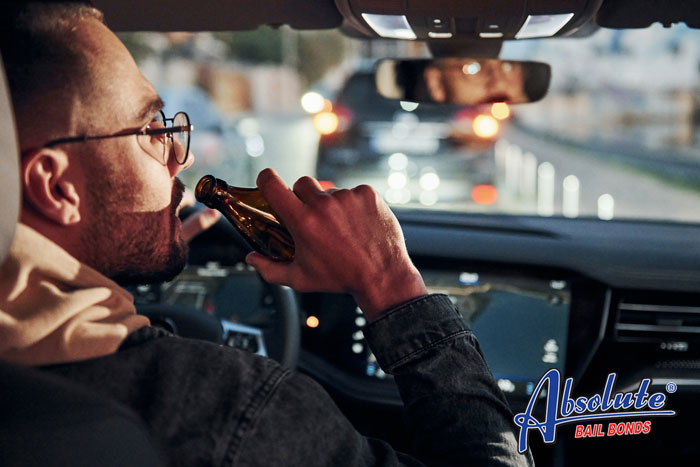
Wet and Reckless in California
If you’ve never heard of a wet and reckless charge in California, you’re not alone. Very few people are aware of them. Most of the people who do know about wet reckless driving offenses are lawyers who specialize in DUI cases.
What is a Wet Reckless Driving Charge in California
A patrol officer won’t write a wet reckless ticket. The only way you’ll ever get such a thing is if you’ve been arrested for a DUI in California and your lawyer can talk it down to a wet reckless charge. The fact that it’s not a traditional driving violation is the reason so few people have even heard of wet reckless driving.
A wet reckless charge is a plea agreement the California lawyers use in drunk driving cases. They usually only apply the first time a person is involved in a DUI. The biggest difference between a wet reckless charge and a traditional DUI conviction is that the consequences connected to a wet reckless charge are milder than those attached to a DUI. In many cases, people find that having a wet reckless charge on their file doesn’t create as many problems when employers run a background check.
In the past, some lawyers haven’t been fans of wet reckless charges, but changes made in 2021 have altered their stance.
How a Wet Reckless Compares to a DUI
If you’re able to plea a DUI down to a wet reckless in California, there is no automatic suspension of your driver’s license, though there is an exception. If the DMV learns that your wet reckless charge resulted from a BAC of 0..08% they can still suspend your license, though the suspension might not last as long. It’s also important to understand that the charge will result in two points being added to your driving record.
A wet reckless charge doesn’t involve mandatory jail time. If the judge does sentence you to jail, the maximum amount of time you would serve is 90-days.
You’ll probably still be required to take a few DUI classes, but it’s normally far fewer than you’d have to take if you were charged with a formal DUI.
While there is still a probationary period connected to a wet reckless conviction, it’s significantly shorter. The probation for a wet reckless is generally one to two years, whereas for a DUI it’s three to five years long. This can have a huge impact on your life if you plan on moving out of state or doing much traveling.
Wet and reckless charges aren’t applicable in every single DUI situation. You’ll have to consult with a highly experienced DUI attorney to determine if this is the route you should take following a DUI arrest.

Tips for Kids Going Back to School
The threat of your young child disappearing when they go back to school is far greater than you imagine. According to Child Find of America, approximately 2,300 children are abducted every single day in the United States. The National Center of Exploited and Missing Children reported that in 2020, an estimated 1 in 6 missing children were victims of sex trafficking.
Stranger danger and abduction prevention lessons are something you and your children should always be working on. With the start of school just around the corner, now is the time to sit down with your child and review everything they know about stranger danger and staying safe.
While you’re shopping for school supplies, use this time with your child to review the rules you should already have in place regarding accepting rides from strangers.
The rules your child should already be familiar with include:
- Never get into a stranger’s vehicle
- Always staying several feet away from a stranger’s vehicle
- Knowing that if a person makes them feel even the slightest bit uncomfortable, that they should immediately seek out the assistance of a trusted adult
Abductors usually don’t bother with children who are traveling in packs, which is why it’s important to teach your child that they should always have a friend or two with them wherever they go. The more friends they have with them while walking home from school, playing in the back, and riding bikes, the safer they will be.
Now is the perfect time to teach your child how to be aware of their surroundings. This is something you should do by example. Put your phone in your pocket and actively survey your surroundings when you walk to and from buildings. Teach your child to notices is strange people are hanging around places like the playground. Teach them to be particularly aware if they notice that the same person shows up in multiple locations your child is at and to let you know about this person.
Make it very clear that it doesn’t matter if a stranger has candy, is saying they are lost/hurt, or has kittens/puppies to play with that your child is not to approach them. That their best course of action is leaving the immediate area and finding a trusted, familiar adult.
Teach your child to scream. If the worse does happen and a stranger approaches your child, the screams will cause the adult to quickly decide that your child isn’t worth the effort and they will flee the scene.
Don’t assume that just because your child is older that you no longer have to worry about abductions. According to the Missouri Child Identification and Protection Program, 81% of abducted minors were 12 years old or older.

Distracted Walking in California
Everyone is familiar with distracted driving, but few of us have ever heard of distracted walking laws. If you’re wondering if that’s even a real thing you’re not alone.
Rest assured, not only is distracted walking a viable concern, but one California city, Montclair, has already passed a distracted walking law. In April 2018, the city’s distracted walking law officially went into effect. Once that happened, anyone caught using their cell phone while walking across the street was subjected to a $100.
It seems like a silly rule, but if you take a few minutes watching people walking on the sidewalk and you can see why distracted walking is a concern. These days, people are completely glued to their phones and often unaware of what is happening around them. Some don’t even look up when they start crossing the street. This type of behavior has prompted more cities to explore the concept of distracted walking laws.
A team of researchers at Rutgers New Jersey Medical School, Newark revealed that the number of medical emergencies that included head and neck injuries has substantially increased in the past 20 years.
Legally, drivers are supposed to be aware of pedestrians and do everything in their power to avoid hitting them with their vehicle. The problem that arises is how are drivers supposed to predict when a pedestrian who is texting will suddenly step into the path of oncoming traffic. What makes the issue even more challenging is that many of these pedestrians don’t even realize that they are now in the middle of the road and don’t behave rationally.
Do you think more cities should have distracted walking laws? If distracted laws became common and patrol cops started issuing tickets and fines, would you be more inclined to leave your phone in your pocket, or would you continue to talk and text?

Getting Into Trouble for Vandalism in California
California lawmakers have little patience for vandalism. The exact law dealing with the issue is Penal Code 594 PC which defines vandalism.
“Every person who maliciously commits any of the following acts with respect to any real or personal property not his or her own, in cases other than those specified by state law, is guilty of vandalism:
- Defaces with graffiti or other inscribed material.
- Damages.
- Destroys.
Whenever a person violates this subdivision with respect to real property, vehicles, signs, fixtures, furnishings, or property belonging to any public entity, as defined by Section 811.2 of the Government Code, or the federal government, it shall be a permissive inference that the person neither owned the property nor had the permission of the owner to deface, damage, or destroy the property.”
Most people assume that vandalism is a deliberate act, such as spraying graffiti on the side of a commercial building, and in some situations, that’s certainly true. However, there have been many instances where vandalism has been added to other charges. In many of these situations, people had no intention of committing an act of vandalism and don’t even realize they have until their defense lawyer explains the list of charges that have been filed against them. An example of this is being charged for vandalism because you broke a window during a fight.
Even doing something as seemingly innocent as leaving a handprint in some wet cement can be considered an act of vandalism.
Don’t assume that a vandalism charge isn’t something you don’t have to take seriously. Yes, it’s a misdemeanor but a guilty conviction could result in you spending some time in jail. If you’re convicted of felony vandalism, the long-term impact the single incident has on your life could be huge.
Vandalism in California is a wobbler offense, meaning that it can be a misdemeanor or a felony. The only thing that determines which way the charge wobbles is the monetary amount to the damage. Don’t assume that you would have to do a lot of damage to be charged with felony vandalism. If your act of vandalism results in $400 or more worth of damage, you’ll be charged with a felony. Considering today’s cost, that’s not much vandalism.
If you’re convicted of misdemeanor vandalism, you could be sentenced to a full year in jail and asked to pay a $1,000 fine. In many cases, the judge will also order restitution. It’s common for community service and probation to be a part of the sentencing.
A guilt conviction for felony vandalism could end in a sentence that includes up to three years in prison and a $10,000 fine.
The reason the penalties connected to vandalism are so severe is that state lawmakers want people to stop and think about their actions beforehand. Throwing a few eggs at your neighbor’s house when you’re upset about them blocking your driveway might seem like a good idea until you realize that doing so could result in you being sent to prison.
When it comes to acts of vandalism you should always stop and think if the moment of satisfaction will be worth the potential fallout if you’re caught and convicted.

Should You Open Your Door When Someone Knocks?
There is a knock on your door. You stand beside the door for several seconds torn between the urge to open it and find out who is on the other side and a genuine concern that opening the door could jeopardize your safety.
Knocks in the Middle of the Night
The general rule of thumb is that if a stranger knocks on your door in the middle of the night, you shouldn’t let them in. Even if the person says that they are in trouble, keep your door locked. That does not mean you have to walk away from the situation. You can continue to speak to the individual through your locked door and you can also call for help.
The reason you should not open your door to a stranger in the middle of the night is that claiming to need help is an old con that thieves use to gain access to a home. Many people who were acting as Good Samaritans have been injured or killed after letting an allegedly injured person into their home.
Kids and Door Knocks
If you have children in your home, teach them that they should never open the door, no matter who claims to be knocking on it. Kids have a trusting nature and are excited to find out who is knocking on the door. This can lead to all sorts of trouble. Advise your child to inquire about the name of the person on the other side of the door and then to alert the responsible adult who is in the home.
If someone you know is coming to your home, ask them to use their cell phone and call you when they reach your home rather than knocking on your door and temping your child to open the door.
Use a Door Bell Camera
It’s a good idea to get a doorbell camera. These are great inventions. Even better than peepholes because you can view the footage on your smartphone, well away from the front door. Not only does the doorbell camera allow you to see exactly who is on the other side of the door, but it turns out to be a threatening or suspicious individual, you can show the footage to the police.
When it comes to people knocking on your door, especially people you don’t know, it pays to be cautious.

Evacuating from Wildfires
Wildfires are terrifying. Not only do they happen unexpectedly but they leave a path of total destruction in their wake. If there is a wildfire in your area, you should start preparing for evacuation as soon as you hear the news. Getting started early means you’ll be ready to go if the police do issue a formal evacuation notice.
Fill Up Your Gas Tank
When there is a wildfire in the vicinity, the last thing most people want to think about is gasoline, but taking a trip to the nearest gas station should be your first priority. Fill up your car’s gas tank so that it’s ready to go if there’s an ordered evacuation. The full gas tank allows you to quickly put a safe amount of space between you and the wildfire.
Secure Your Pets
If you have pets, you should plan on bringing them with you. The problem is that the smell of smoke and your anxiety changes their behavior. This makes it difficult to catch them. Rather than run the risk of them getting lose or you being unable to load them into the car, catch them as soon as possible.
Pack Your Vehicle
The next thing you need to do is pack your vehicle. The idea is to have everything ready to go so that as soon as the police issue an evacuation order, you can jump in your vehicle and hit the road. Items you should pack include water, some quick snacks, money, important papers, pet supplies, and enough clothing to get you through a few days.
Fireproof Your Home
Once you’ve prepared for a possible wildfire evacuation, you can go around your home and prepare it for a wildfire. While there isn’t a lot you can do to save your home if the wildfire reaches your property, you can do things that lower the risk. Simple things that can be done include moving anything flammable, such as gas cans, bags of leaves, and paint can at least 30 feet from your home’s foundation. Clear dead leaves from your gutters. Make sure there isn’t anything in your yard that could make it difficult for firefighters to reach your home.
Good luck and stay safe!

Will Your California Driver’s License Automatically Be Suspended After a DUI?
Getting a DUI is a traumatic event. One of the hardest things is that it impacts your life for a long time. For most people, the biggest challenge is losing their driving privileges. Many people assume that as soon as they’re convicted of a DUI they will lose their license for several months, but that’s no longer the case. Traditionally, a first-time DUI conviction resulted in a 6-10 month license suspension.
Yes, many people in California do have their license suspended following a DUI arrest, but some don’t realize that there is another option.
Few people know that it’s the California DMV, not the sitting judge, who determines what your driving privileges are following a DUI. Many people are surprised to learn that there will also be a DUI hearing that’s conducted by the DMV and it is during this hearing that post-DUI driving privileges are discussed.
The purpose of the DUI hearing is to decide what should be done with your driver’s license. One of the interesting things about current DUI DMV hearings is that the panel doesn’t always instantly order a license suspension. Starting in 2019, the DMV ruled that some drivers who were dealing with their first DUI charge would be allowed to continue driving, with restrictions, provided they were willing to have an ignition interlock device fitted to their vehicle. The reason for this decision is so that the person doesn’t have to worry about losing their job because they can’t get to work without a license. The other advantage of not automatically suspending a license was that it enabled parents to continue transporting their children to school and other activities. Currently, the DMV installs the IID on cars for about four months in first-time DUI cases. Second/third-time offenders will usually have to deal with the IID for one to two years.
To ask for the IID rather than a full license suspension, you have to contact the DMV and request a hearing. This request has to be placed within 10 days of your DUI arrest. Failing to do so will result in the automatic suspension of your license.
If you miss the 10-day window, the DMV will suspend your license and let you know how long the suspension will be in place.
The process of getting your license reinstated will involve:
- Completing California’s DUI school
- Providing the DMV with an SR-22 Insurance form
- Paying a $125 reinstatement fee
All things considered, it really is in your best interest to contact the DMV shortly after you’ve been arrested for a DUI and booking a formal hearing.

Safety Tips for College Students
It’s the time of year when many young adults are preparing for their first semester of college. In most cases, this is the first time they have lived without the supervision and guidance of their parents. One of the things collegebound students should already be reviewing is how they can make sure that they have fun and manage to stay safe during their freshman year.
Always Be Mindful of Your Safety
The great thing about living in a dorm is that the close living quarters means forming a tight bond with many of the people living on your floor. The downside to living in a dorm is that the sense of family and friendship can cause you to become lax when it comes to your safety. The biggest problem many students encounter while living in the dorm is that they become so comfortable that they start neglecting to lock their doors.
From day one, get into the habit of locking your door and double-checking the lock each time you enter and leave your dorm room.
Establish the Buddy System
While staying in your dorm and only going to classes will keep you safe, it’s not much fun. Rather than locking yourself away, get into the habit of creating a buddy program when you go out. Make a deal with a few different friends that no one goes home without the others and to keep an eye on one another the entire time you’re out and having a good time.
Keep Your Phone Charged
Each time you leave your dorm room make sure your phone is fully charged and that it’s easily accessible. It’s your first line of defense if you get into trouble while you’re out.
Pay Attention to Your Surroundings
When you’re out and about, pay attention to your surroundings. Stay in brightly lit areas. Stick to areas that are populated and heavily patrolled by campus security. Keep your eyes on the environment rather than on your phone.
Get Your Own Drinks
It doesn’t matter if you’re at a party, relaxing in your own room, or at a local pizza place, always get your own drinks. You should also never leave your drink unattended. If for some reason you do have to walk away from your drink, discard the unfinished portion and get yourself a new one.
Don’t be Afraid to Contact Campus Security
If your friends leave without you, it’s better to contact campus security and have them give you a ride back to your dorm than to try to walk home alone. Remember, that they’re paid to protect you.
Following these safety tips and using common sense provides you with the tools needed to stay safe while also enjoying your first year of college life.
Establish Patterns for Contacting Loved Ones
While you don’t necessarily want to always use the same route for going to classes and parties, you do want to establish good patterns when it comes to checking in with friends and family. Checking in on a specific day of the week and close to the same time each time is a good warning system if something goes wrong. If you don’t check-in, they know that they should contact the authorities and have someone do a physical check on you.

Off-roading in California’s State and National Parks
Off-roading isn’t just a lot of fun, it’s also a great way to see parts of California’s state and national parks you wouldn’t otherwise, get to see. Off-roading provides you with the means to visit more remote areas than the traditional roads take you to, while also allowing you to cover more ground than you would if you were hiking or biking.
While there are many benefits connected to off-roading through California’s state and national parks, going off-road also means you have some additional responsibilities you must adhere to.
Make Sure Your Permit is Current
You’re not allowed to hop into your ATV and start tooling around California’s state and national parks. The only people who are allowed to enjoy off-road adventures are those who have the proper permits.
If you’re going on an off-road adventure in one of California’s state parks, you need to fill out an application with California’s Department of Parks and Recreation. The vehicle you are using must comply with current state environmental codes, and your off-highway vehicle permit must be kept current. The OHV permit is $25 if you’re purchasing a season-long pass. You only have to pay $5 for a day pass.
If you’re not a California resident, you still have to purchase an OHV permit before you can embark on an off-road adventure through the truly stunning state parks. The cost of the permit for non-residents is $30.
Off-Roading in National Parks
Some people make the mistake of thinking that because they got an OHV permit from the state, that they can also go off-roading in California’s national parks. That’s not the case. The National Park Service manages the National Parks and has its own permit. You’ll have to contact the National Park Service to learn about the application process and cost of the off-road permit.
Follow the Rules
Don’t assume that your off-road permit allows you to go anywhere and do whatever you want. That’s not the case at all. The National Park Service in particular is diligent about enforcing rules that pertain to what you can and can’t do while off-roading. Breaking one of the rules could end up costing you a lot of money.
If you’re going off-roading it’s important to find out exactly where you can and can’t go. Most parks have maps and even post the areas where you’re not allowed to take your off-road vehicle.
Simply getting caught off-roading in a section of a National Park, where off-roading is prohibited, is considered a violation of Title 36 of the Code of Federal Regulations. If you’re convicted of the violation, you could be sentenced to as much as 6 months in prison and also fined $5,000. Additional charges that are often added to this violation include violating an endangered
species, littering, wildlife, plants, and natural or cultural features violations, and damaging archeological resources.
Have fun on all of your off-road adventures this summer!

Can You Go to Jail for Online Scams?
If you’re wondering if you can go to jail for instigating an online scam, the answer is yes.
If your wondering if you will go to jail for an online scam you’ve run, the answer isn’t as clear.
The first thing you need to understand is that it doesn’t matter what you’re doing, if you’re using a dishonest method for getting money out of people, you’re running a scam and that is always illegal. It doesn’t matter if you managed to acquire $20 or $20,000, the scam was still illegal. If the police catch on to what you’re doing and have enough evidence, you will be charged.
The types of internet crimes individuals have been charged with in California include:
- Phishing
- Online credit card fraud
- Romance scams
- Ponzi schemes
- Greeting card scams
- Bank loan scams
- Identity theft scams
- Craigslist scams
The amount of money you collected via the online scam will influence whether you’ll go to jail if you’re convicted and also how long you’ll be imprisoned.
If the scam had minimal financial consequences, it’s likely that you’ll be charged with a misdemeanor. While the sentencing could include a year in jail, the judge may decide that you only have to pay a fine or do community service. You could also be placed on probation.
If you acquired a larger sum of money, it’s likely you’ll be charged with a felony. In that case the likelihood of you being sent to jail increases. If you’re convicted, the consequences could include being sentenced to time in a state prison, massive fines, and felony probation. The number of victims involved in the scam as well as your criminal history can also play a huge role in how much time you spend in jail as a result of internet crimes.
A stint in jail will likely be only one of the hardships you face following a guilty conviction for perpetrating an online scam. It’s likely that your victims will decide to file civil suits against you as well.

